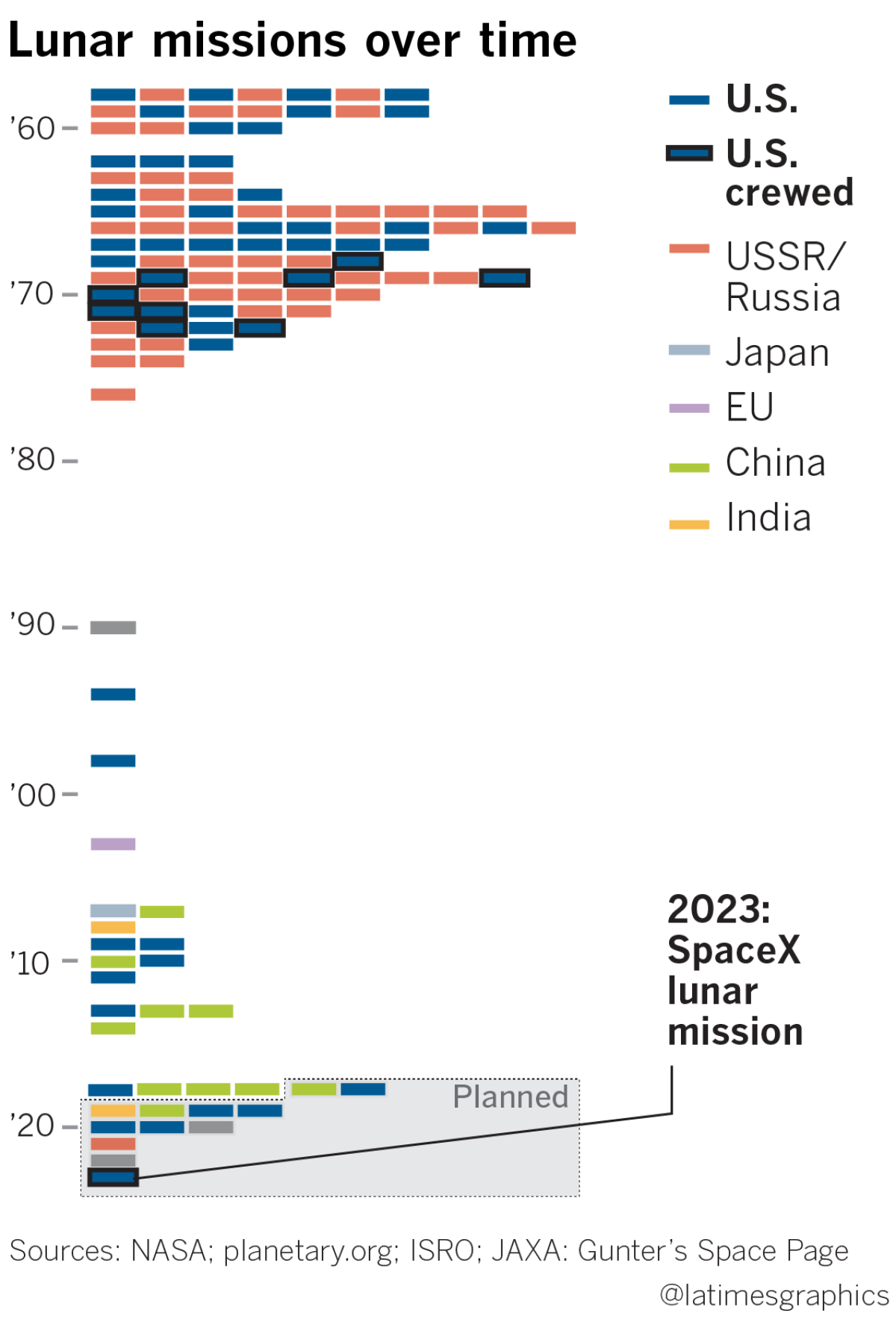SpaceX isn’t the only one interested in heading to the moon. Here’s who else is planning missions
SpaceX’s plan to send a person on a trip around the moon is just one of a handful of lunar missions proposed by NASA and private firms.
SpaceX plans to announce the lunar traveler’s identity during a livestreamed event Monday evening at SpaceX headquarters in Hawthorne. The individual will travel to the moon in SpaceX’s BFR rocket and spaceship system, which has yet to be developed, meaning the trip likely will be years away.
It is unclear whether that person is one of the individuals who put down deposits last year to take a trip around the moon in the company’s Crew Dragon capsule atop a Falcon Heavy rocket.
Amazon.com Inc. Chief Executive Jeff Bezos’ Blue Origin has announced a lunar cargo delivery service called Blue Moon, which a company executive said could be functional in the next five years and capable of delivering large payloads. NASA’s Space Launch System rocket and Orion capsule is scheduled to take an uncrewed flight around the moon in 2020, followed by a flight with astronauts aboard three years later.

While much attention has been focused on Mars, space industry experts say the moon could serve as a first step to future missions. Vice President Mike Pence has advocated a return to the moon, telling the National Space Council in October that it could serve as a steppingstone to Mars.
“A lot of people are looking at the moon as a staging ground for these deeper space missions,” said Bill Ostrove, aerospace and defense analyst at market research firm Forecast International. “It gives you a place to practice where it’s much closer.”
Commercial interest in the moon heightened in 2007 when Google said it would sponsor a $30-million Lunar X-Prize. Under the terms of the contest, the cash prize would be awarded to the first privately funded team to land a rover on the moon that could travel at least 500 meters and send video and images back to Earth.
However, the cash prize was canceled earlier this year after the X-Prize committee determined that none of the teams would make a launch attempt by the March deadline.
Though SpaceX and its chief executive, Elon Musk, have long been focused on Mars colonization, a moon mission could help “keep the momentum alive” and attract more private investment, said Marco Caceres, senior space analyst at Teal Group. SpaceX said that its lunar traveler will ride in the BFR rocket and spaceship system, which will measure 347 feet tall when stacked together.
The BFR is being developed in a facility in the Port of Los Angeles. Musk said in February that development of the BFR was progressing enough that the Falcon Heavy — a rocket with three times the first-stage engines of SpaceX’s workhorse Falcon 9 — would probably not be needed for a two-person lunar tourist trip.
Caceres speculated that SpaceX is planning the moon trip as “kind of a backup in case their plans to go to Mars just take a lot longer than they thought. That helps keep the public interest.”
Ostrove said the Monday event is indicative of Musk’s penchant as a “publicity man” — in 2016, Musk, also chief executive of Tesla Inc., unveiled the Model 3 electric car in front of a crowd of 800 at a company event in Hawthorne.
“SpaceX has a habit of announcing these grand plans and always pushing forward, even if they haven’t quite finished the previous project,” he said. “They’re looking for the next big thing.”
Twitter: @smasunaga
More to Read
Inside the business of entertainment
The Wide Shot brings you news, analysis and insights on everything from streaming wars to production — and what it all means for the future.
You may occasionally receive promotional content from the Los Angeles Times.











